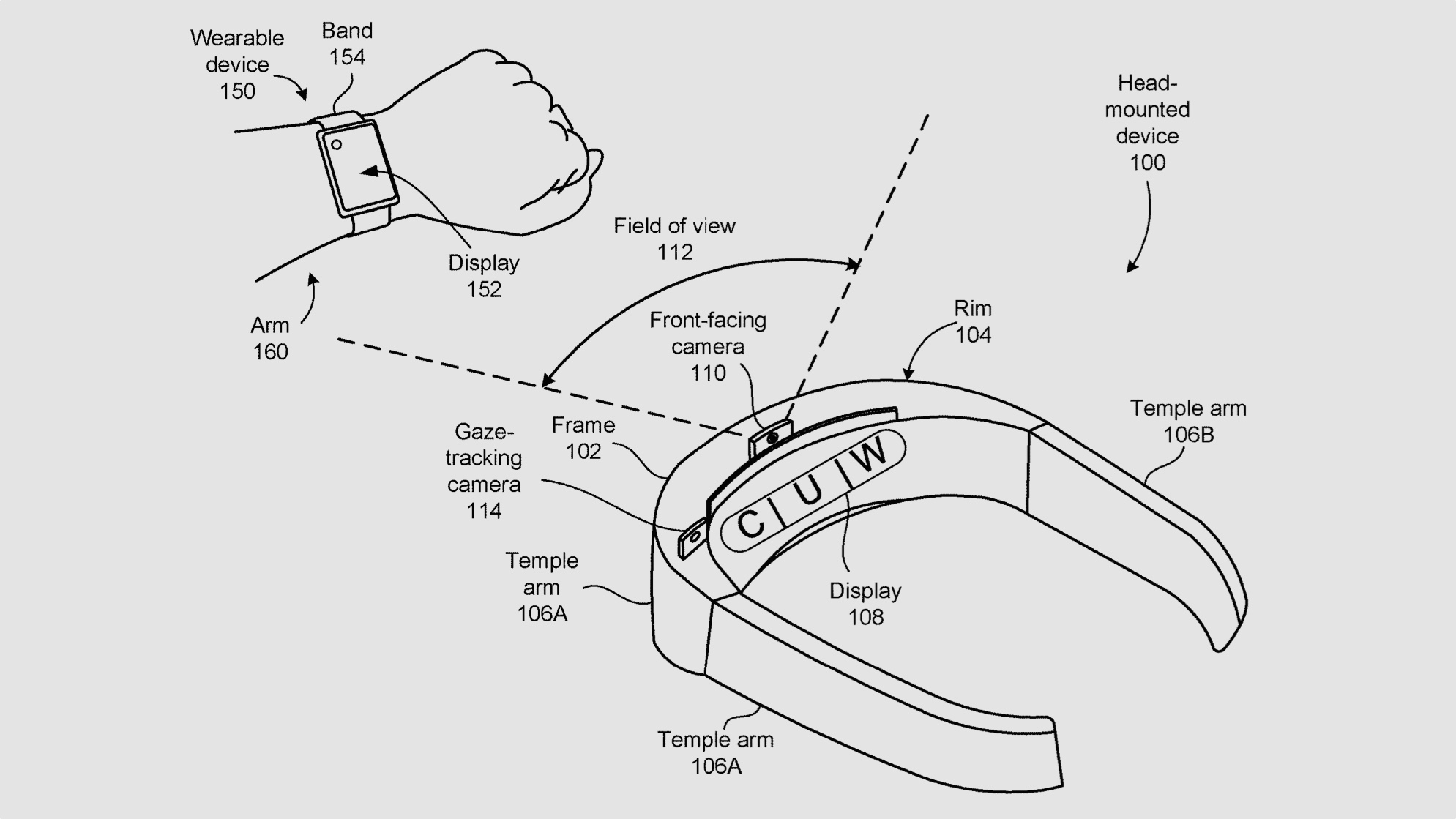
It's easy to forget Google Glass pioneered the idea of a consumer augmented reality headset, more than a decade ago – before privacy fears over the camera forced the company to retreat from the idea like Homer Simpson into the hedgerow.
Now, with behemoths like Apple, Meta, and thousands of developers preparing to reap the benefits of wider AR acceptance, Google Glass looks way ahead of its time.
Indeed, a new patent filing reveals Google is still pondering the return of a Google Glass-like headset – including a significant role for the camera that caused moral outcry and defined the first go-around.
In the filing with the USPTO spotted by Wareable, Google outlines how a camera stationed within a head-worn device could launch AR/VR applications and control related functionality.
Wareable
The camera would first determine the wearer is gazing upon the screen of a companion smartwatch, like the Pixel Watch, before identifying icons and receiving touchscreen gestures. It could then determine a desire to open the corresponding application in the virtual space, the patent explains.
"In some examples, the head-mounted device can determine that the user intends to provide input to the head-mounted device via the wearable device, based on the front-facing camera capturing an image of the wearable device ... based on the gaze-tracking camera capturing images indicating that the user is focusing on an image presented by the display," Google writes in the patent.
Once the headset had determined the user intends to provide input to the display (accelerometer data from the watch like moving the arm closer to the face would help with this), the headset would then begin to receive “raw touch data" from the smartwatch.
So, in one example, the user performing a scrolling gesture on the wearable would cue the headset to move through an open document. In another use case, pressing the display would position a cursor. Those gestures also include identifying letters of the alphabet drawn on the display, in order to open a corresponding application (i.e. U for Uber and C for Calendar), from a menu open on the head-mounted display, Google says.
Effectively, the technology explains makes use of the smartwatch as a gesture-based remote control for the headset, which wouldn't require Google Assistant voice commands, or an additional touch controller.
Google adds: "When the state of the head-mounted device is a home state in which the head-mounted device presents a menu of applications to the user, the library of gestures can include multiple letters, such as the twenty-six letters in the alphabet, with each of the letters being associated with an application that the head-mounted device can launch.
"In some examples, when the state of the head-mounted device is that an application is open, the head-mounted device can compare the touch input data to swipe gestures that change what portion of a document the head-mounted device displays to the user via the display and/or other gestures associated with inputs to the open application."
Google stopped selling the last enterprise version of Google Glass in March 2023. So far, there has been little indication that Google is considering resurrecting the range. However, the fact the company is still patenting technology to ensure any future headset would interact with other products in the Made by Google range is surely significant.
In many ways, those at the company's “moonshot” division Google X (now just X) may feel a little aggrieved at the excitement surrounding Apple Vision Pro, especially the ability to capture those new, super immersive Spatial Videos.
The main blowback against Google Glass was the presence of a camera that could capture 1080p videos and 5-megapixel photos, stoking fears over serendipitous recordings.
Apple's device has a 3D camera that’ll capture lifelike imagery that feels like “spying” on those captured, according to early testers who’ve seen the Spatial Videos in action.
How we test
